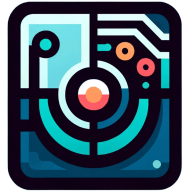3 Best Tools and Methods for Collaborating On Programming Projects
Collaboration in programming projects is evolving rapidly, with new tools and methods reshaping how teams work together. This article explores cutting-edge approaches to enhance productivity and foster learning in development environments. Drawing on insights from industry experts, it delves into AI-assisted tools, structured workflows, and the power of pull requests in modern software development.
- AI-Assisted Tools Bridge Experience Gaps
- Structured Workflow Balances Mentorship and Efficiency
- Pull Requests Foster Learning and Alignment
AI-Assisted Tools Bridge Experience Gaps
When collaborating on programming projects with team members of varying experience levels, I find that having the right tools can significantly bridge knowledge gaps. In my workflow, I've had great success using Cursor IDE, which provides an AI-assisted pair programming experience that goes beyond what tools like GitHub Copilot offer. The integrated ability to include our database schema when writing complex SQL queries has been particularly valuable for our less experienced developers, while still providing efficiency gains for senior team members.
Beyond tools, I believe in maintaining clear documentation and conducting regular code reviews to ensure knowledge transfer happens organically throughout the development process. By combining powerful development environments with structured collaboration practices, we've been able to create workflows that accommodate different skill levels while maintaining high quality standards.
Structured Workflow Balances Mentorship and Efficiency
Here's a concise, effective approach that I've used for collaborating on programming projects with mixed experience levels:
Version Control & Branching:
Use Git with GitHub/GitLab/BitBucket for a clear commit history and code ownership.
Follow a branching strategy like Gitflow to isolate features and prevent conflicts.
Review Code & Pair Programming:
Use pull requests with inline comments to mentor less experienced devs.
Conduct occasional pair programming using tools like VS Code Live Share or Tuple for real-time guidance.
Documentation and Onboarding:
Maintain clear ReadMe files, setup scripts, and architecture docs.
Use Wikis or Swimm to make onboarding faster.
Project Management & Communication:
Track tasks using JIRA, Trello or Linear.
Use Slack or Discord for async updates; weekly standups for sync.
This workflow balances mentorship with efficiency, letting all team members contribute confidently.

Pull Requests Foster Learning and Alignment
For me, the most effective way to collaborate on programming projects—especially when working with a mix of experience levels—is to use Git with a pull request workflow. Early in my career, I was on a team where everyone just pushed code straight to the main branch. It worked fine until a junior developer accidentally overwrote a significant portion of the production code. That one mistake resulted in a week of rework and a significant amount of unnecessary stress. From that point on, I became a big believer in structured version control. With GitHub or GitLab, everyone contributes through branches, and pull requests provide a natural place for us to review, comment, and learn from each other before code goes live.
What I like about this method is that it strikes a balance between structure and flexibility. Junior developers receive feedback in real-time through code reviews, while more experienced team members can share best practices without slowing down the project. I've also found that pairing Git with clear commit messages and a straightforward branching strategy keeps the entire team aligned, regardless of their experience level. It turns what could feel like a hierarchy into a mentorship opportunity, and that's when collaboration really starts to click.



